In Baltimore Arrests are Down and Crime is Way Up
A debate forum at the New York Times begins:
A rise in gun violence in New York, Baltimore and other cities after months of angry protests over police killings of unarmed black men, have led some to see a ”Ferguson effect,” in which police, spooked by criticism of aggressive tactics, have pulled back, making fewer arrests and fewer searches for weapons.
But has a wave of murders and shootings brought an end to the long drop in crime?
I don’t think that we will see a sustained increase in crime at the national level. But there is no question that we are seeing a Ferguson effect in Baltimore–more precisely a Freddie Gray effect. Arrests in Baltimore have fallen by nearly 40% since Freddie Gray’s funeral and the start of the riots on April 27. In the approximately 3 months before the Gray funeral police made an average of 87.7 arrests per day, since that time they have made only 54.6 arrests a day on average (up to May 30, most recent data).
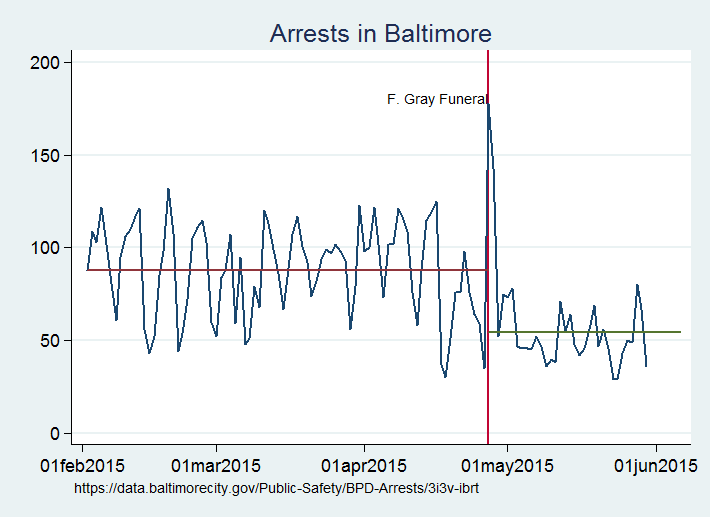
As Peter Moskos argues:
In Baltimore today, several police officers need to respond to situations where formerly one could do the job. This stretches resources and prevents proactive policing.
Not all arrests are good arrests, of course, but the strain is cutting policing across the board and the criminals are responding to incentives. Fewer police mean more crime. As arrests have fallen, homicides, shootings, robberies and auto thefts have all spiked upwards. Homicides, for example, have more than doubled from .53 a day on average before the unrest to 1.35 a day after (up to June 6, most recent data)–this is an unprecedented increase–and the highest homicide rate Baltimore has ever seen.
Put differently, the unrest in Baltimore and subsequent reduction in policing is responsible for roughly twenty “excess” deaths. (so far)
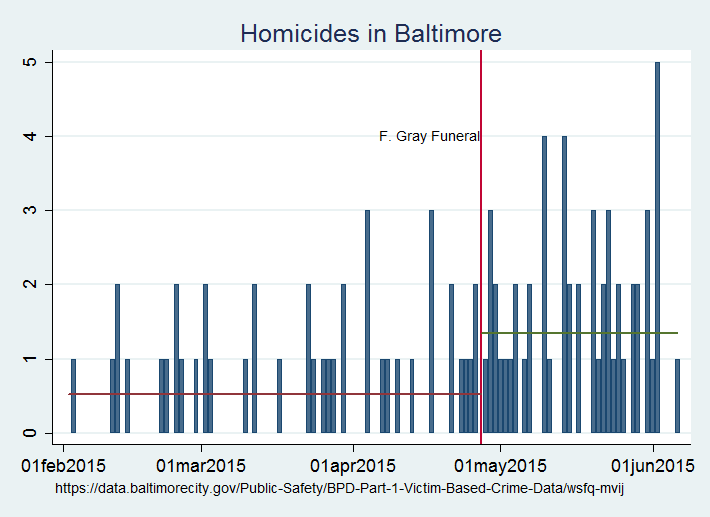
It’s not just homicides, the number of shootings in Baltimore has more than tripled. Shootings increased from .82 a day before the unrest to just over 3 a day. Since the onset of the riots there has hardly been a day without a shooting.
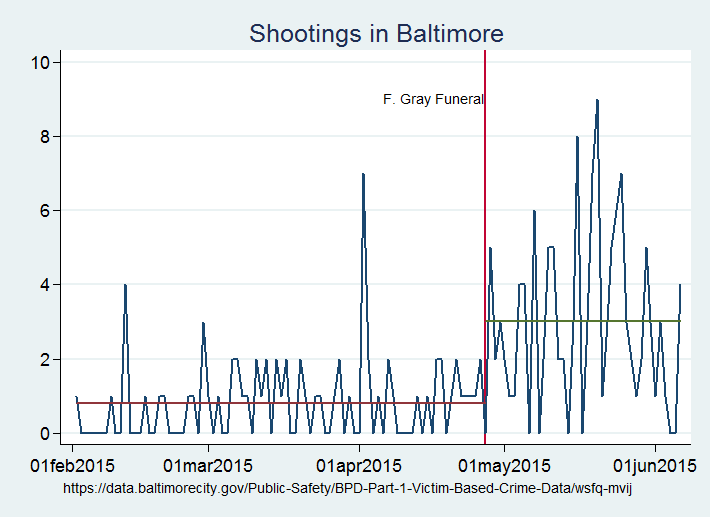
Robberies are up from 8.1 per day to 13.25 per day on average.
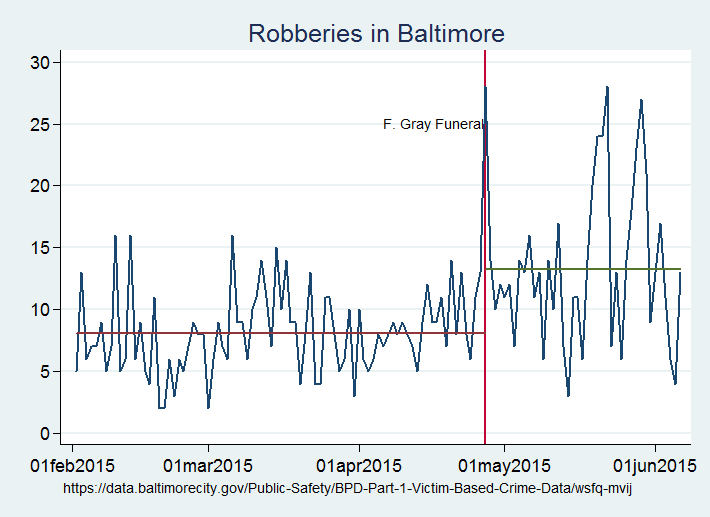
Even auto thefts are up from 9.6 per day to 13.6 per day on average.
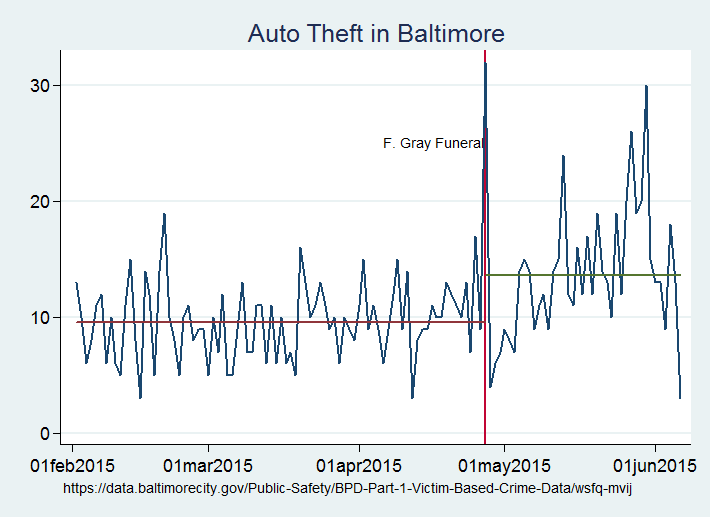
The increase in homicides and other crime is terrible and it is also putting a strain on police resources.
Police Commissioner Anthony W. Batts said the rise in killings is “backlogging” investigators, just as the community has become less engaged with police, providing fewer tips.
With luck the crime wave will subside quickly but the longer-term fear is that the increase in crime could push arrest and clearance rates down so far that the increase in crime becomes self-fulfilling. The higher crime rate itself generates the lower punishment that supports the higher crime rate (see my theory paper). In the presence of multiple equilibria it’s possible that a temporary shift could push Baltimore into a permanently higher high-crime equilibrium. Once the high-crime equilibrium is entered it may be very difficult to exit without a lot of resources that Baltimore doesn’t have. I have long argued that high-crime areas need more police but the tragedy is that they also need high-quality policing and that too is made more difficult to achieve by strained budgets and strained police.